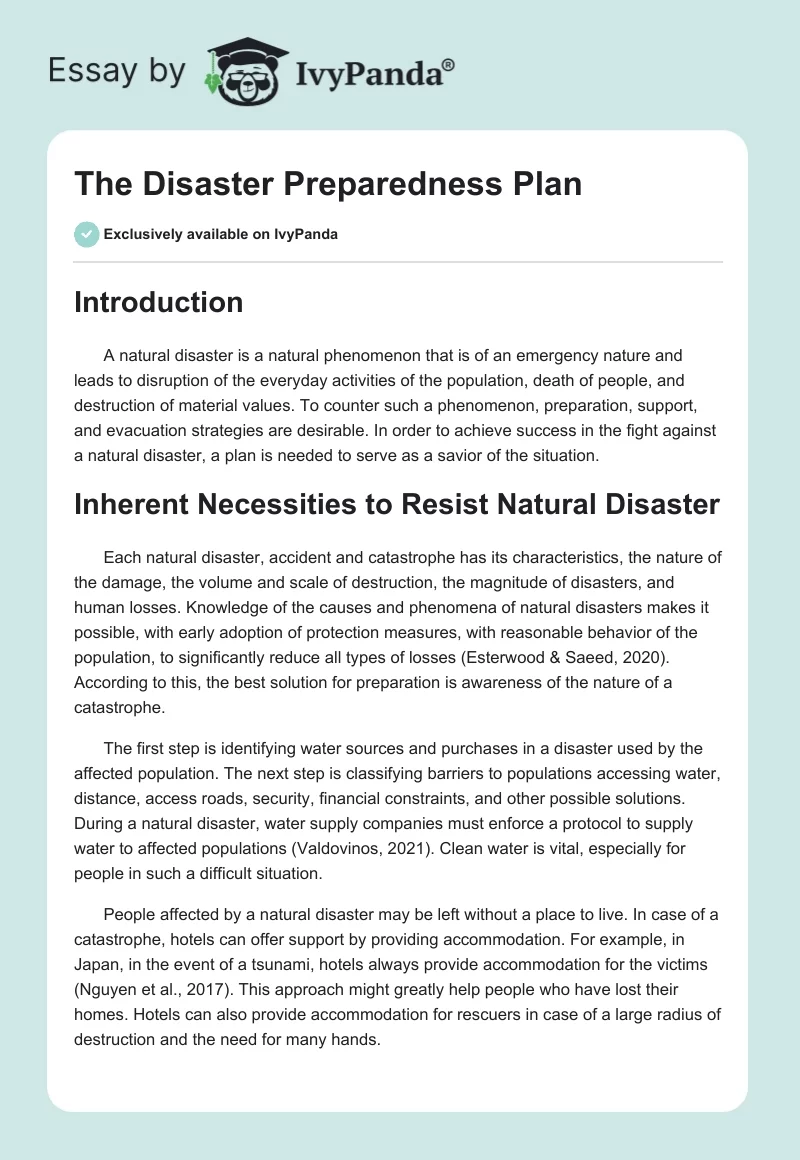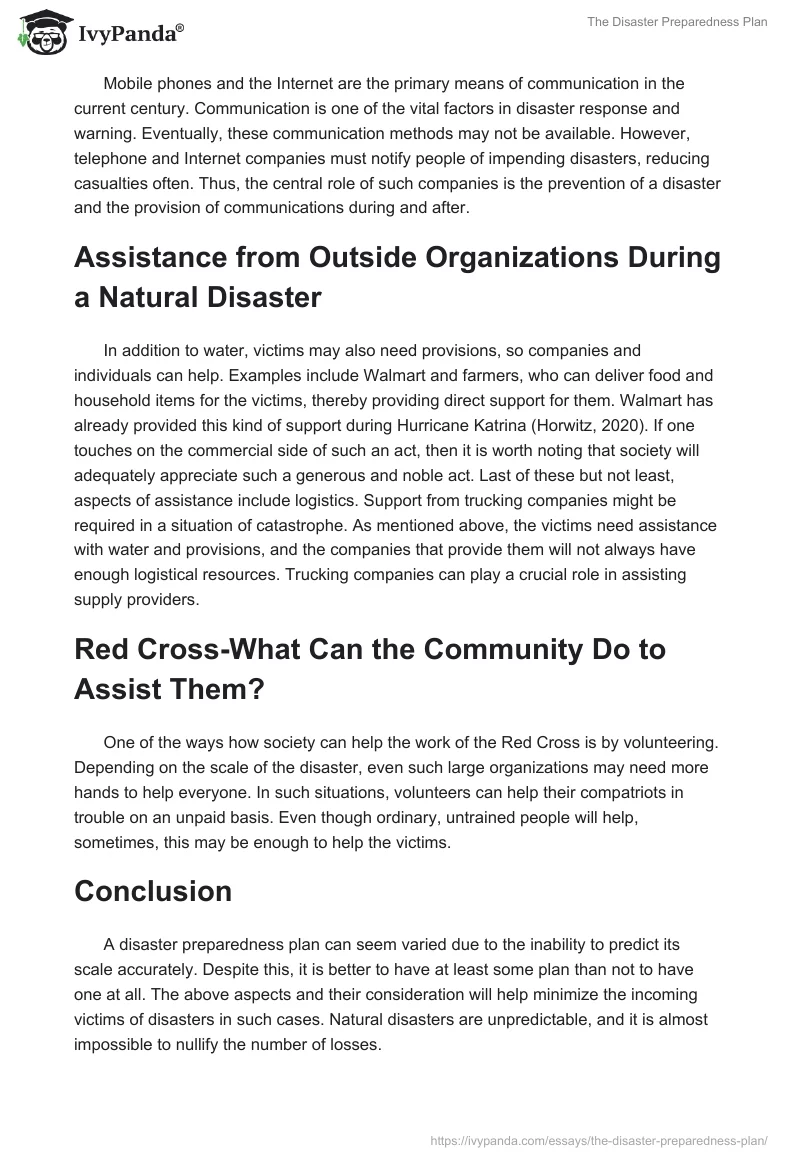Introduction
A natural disaster is a natural phenomenon that is of an emergency nature and leads to disruption of the everyday activities of the population, death of people, and destruction of material values. To counter such a phenomenon, preparation, support, and evacuation strategies are desirable. In order to achieve success in the fight against a natural disaster, a plan is needed to serve as a savior of the situation.
Inherent Necessities to Resist Natural Disaster
Each natural disaster, accident and catastrophe has its characteristics, the nature of the damage, the volume and scale of destruction, the magnitude of disasters, and human losses. Knowledge of the causes and phenomena of natural disasters makes it possible, with early adoption of protection measures, with reasonable behavior of the population, to significantly reduce all types of losses (Esterwood & Saeed, 2020). According to this, the best solution for preparation is awareness of the nature of a catastrophe.
The first step is identifying water sources and purchases in a disaster used by the affected population. The next step is classifying barriers to populations accessing water, distance, access roads, security, financial constraints, and other possible solutions. During a natural disaster, water supply companies must enforce a protocol to supply water to affected populations (Valdovinos, 2021). Clean water is vital, especially for people in such a difficult situation.
People affected by a natural disaster may be left without a place to live. In case of a catastrophe, hotels can offer support by providing accommodation. For example, in Japan, in the event of a tsunami, hotels always provide accommodation for the victims (Nguyen et al., 2017). This approach might greatly help people who have lost their homes. Hotels can also provide accommodation for rescuers in case of a large radius of destruction and the need for many hands.
Mobile phones and the Internet are the primary means of communication in the current century. Communication is one of the vital factors in disaster response and warning. Eventually, these communication methods may not be available. However, telephone and Internet companies must notify people of impending disasters, reducing casualties often. Thus, the central role of such companies is the prevention of a disaster and the provision of communications during and after.
Assistance from Outside Organizations During a Natural Disaster
In addition to water, victims may also need provisions, so companies and individuals can help. Examples include Walmart and farmers, who can deliver food and household items for the victims, thereby providing direct support for them. Walmart has already provided this kind of support during Hurricane Katrina (Horwitz, 2020). If one touches on the commercial side of such an act, then it is worth noting that society will adequately appreciate such a generous and noble act. Last of these but not least, aspects of assistance include logistics. Support from trucking companies might be required in a situation of catastrophe. As mentioned above, the victims need assistance with water and provisions, and the companies that provide them will not always have enough logistical resources. Trucking companies can play a crucial role in assisting supply providers.
Red Cross-What Can the Community Do to Assist Them?
One of the ways how society can help the work of the Red Cross is by volunteering. Depending on the scale of the disaster, even such large organizations may need more hands to help everyone. In such situations, volunteers can help their compatriots in trouble on an unpaid basis. Even though ordinary, untrained people will help, sometimes, this may be enough to help the victims.
Conclusion
A disaster preparedness plan can seem varied due to the inability to predict its scale accurately. Despite this, it is better to have at least some plan than not to have one at all. The above aspects and their consideration will help minimize the incoming victims of disasters in such cases. Natural disasters are unpredictable, and it is almost impossible to nullify the number of losses.
References
Esterwood, E. & Saeed, S. A. (2020). Past epidemics, natural disasters, Covid19, and Mental Health: Learning from history as we deal with the present and prepare for the future. Psychiatric Quarterly, 91(4), 1121–1133. Web.
Horwitz, S. (2020). The private sector’s contribution to natural disaster response. Bottom-up Responses to Crisis, 57–70. Web.
Nguyen, D. N., Imamura, F., & Iuchi, K. (2017). Public-private collaboration for Disaster Risk Management: A case study of hotels in Matsushima, Japan. Tourism Management, 61, 129–140. Web.
Valdovinos, J. (2021). Transnational Corporations in Urban Water Governance: Public-Private Partnerships in Mexico and the US. Routledge, Taylor & Francis Group.


